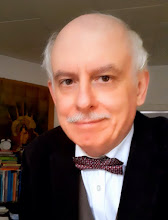What is 'renewal' in the arts, in art music? From Romanticism onwards, it has been the individual, subjective approach of the artist which was considered the 'essence' of art. If a work was not very different from all other works, it could not be really good. Hence the drive to transcend boundaries and limitations, in an intense search for 'originality' which was seen as the expression of a unique personality, the only existing one-off personality of genius. Hence the many 'isms' that emerged in the arts, and in music, in the course of the 19th century, when the romantic idea of the unique, anti-bourgeois artist was the ideal. This development created many new possibilities in the arts, and most of them were enrichments, in the sense that the repertoire of means available to the artist was considerably extended. Also it meant that a much greater diversity in styles was possible, much more so than in former ages.
When the drive of originality becomes more important that the awareness of artistic quality however, originality becomes meaningless: also a serial killer can be very original. In serious art, the notion of originality can have different meanings: before 19C romanticism, originality was the way in which the artists handled the means which were generally accepted, without undermining the fundaments of the art form. But which are the fundaments of the art form? This is nowhere 'fixed' in an orthodoxy and subject to continuous assessment. But that does not mean that there is no fundament and that everything determining a work of art is entirely random and merely a 'cultural construct' which can be changed at will. Art is born from deeper layers in human psychology than the nature of its means.
In the 17th century, one custom in painting was to use a brownish underpainting, which forms the basis of the work and which is then covered with the appropriate colourings, more or less transparent according to their expressive function, so that the underpainting would shine through the whole at the end of the process. This aspect gives an atmospheric effect which enhances visual depth and unifies the image; it was one of the extensions of means that Leonardo da Vinci achieved (and experimented with by the earlier Bellinis) and which was followed by most of the painters afterwards. Johannes Vermeer however (17C), used a lightish-grey underpainting, which made it possible to enhance the brilliance of the colours being added to it. It was this brilliance and clarity which struck the French painters in the 19th century who later-on became 'the impressionists', as something to be further explored, and hence the striking effects of light and atmosphere they achieved. This is an example of renewal of means which left the fundament of the art form untouched; before Leonardo, painting was - most of the time - also including underpaintings, but not as an atmospheric effect, and those paintings are clear and sharply-defined as a result (and not less good for that reason). In the course of the 19th century, using a brownish underpainting was not suddenly 'exposed' as something faulty and undesired, there came simply more different possibilities available, depending upon the vision of the artist. A tradition was broadened, not demolished or fundamentally changed.
When an art form begins to express itself in forms which are entirely personal and subjective, it stops communicating and it becomes something else (Ligeti: 'My work is not for the public, not even for myself, it is a thing in itself'). It is then no longer part of a living tradition, and as we know, 20C modernism was based upon a very narrow, limiting sense of what a cultural tradition is - in fact, it was a very 'kleinbürgerliche', populist idea of what 'tradition' means: a singlular line of development, guarded by a small, self-appointed 'elite' of taste makers, like priests in a medieval village. A clear formulation of tradition, convention, and canon can be found in 'Classical Architecture; The Poetics of Order' by Alexander Tzonis and Liane Lefaivre (MIT Press 1986). It is not about music, but the same processes can be found in the history of art music:
'Classical architecture, as we have seen, is based on formal conventions that can operate perfectly without being explicitly stated. Being able to design or see classical architecture is like being able to speak or understand a language; one joins a cultural tradition, a social universe. It implies the incorporation of formal conventions and the fitting of these conventions into a larger receiving structure in the mind. In real life, people are not shown the classical canon and all its levels and schemata. They simply come into contact with buildings, with events about buildings. Only slowly is the canon and its schemata crystallized. [...] They [the schemata] are tacitly nested in the building beheld. [...] The formal system of classical architecture has been a domain with blurred boundaries; the classical canon has been constantly modified, like any social convention. The classical building is an expression of this evolving canon that it confirms. At the same time it is the product and the creator of the canon.' (Page 172-173)
This is an apt description of a living process, and not of an abstraction or an orthodoxy. Also, it should be noted that such description has nothing to do with politics or ideologies, or with progressiveness or conservatism - the existence of a cultural tradition is in itself not a political or ideological thing, however ideologies have tried to appropriate cultural traditions for their own ends. People try-out things and those which work, are repeated and varied. The elements which 'work', are experienced as such because they relate to 'the holistic nature of human perception', which is part of our biology and part of evolution. Therein lays the hope of a renaissance of art, and of art music.

No comments:
Post a Comment